Puffer fish Costa Rica
Costa Rica, within its marine fauna, presents a very exotic species known as the puffer fish.
The puffer fish is a family of mainly marine and estuarine fish that belongs to the order Tetraodontiformes. It also receives the names of sea porcupine, or sea ostrich (colloquially).
The puffer fish receives that name because it has the ability to swell, taking in water or air, when attacked or frightened, increasing its size several times making it impossible for the attacker to swallow it.
Their natural prey are crustaceans and molluscs. Its scientific name refers to the four large teeth that the use to crush the shells of crustaceans.
They generally inhabit the tropics and temperate seas. Usually avoiding cold waters, so they are never seen in polar areas.
They stay in shallow coastal areas and also survive in freshwater bodies. Its habitat is made up of vegetation environments, coral reefs and mangroves.
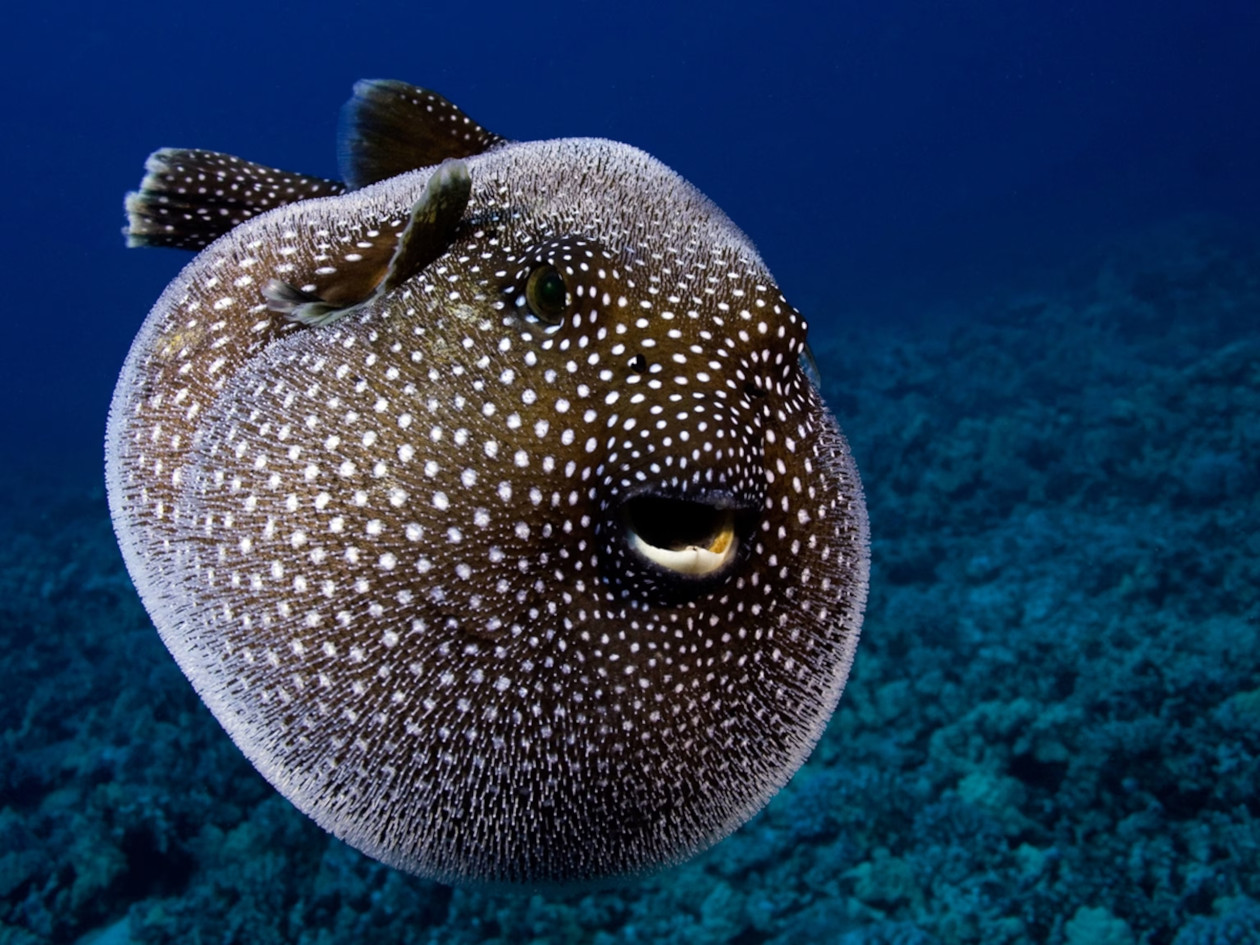
Read also: 5 sea animals at Caño Island that you will love to see
Is this fish poisonous?
The puffer fish is considered one of the most poisonous animals in the aquatic world. Its toxin is known as tetrodotoxin and is lethal to its predators and also to humans.
To give you an idea, tetrodotoxin is up to 1,200 times more deadly than cyanide.
A curiosity, the meat of the puffer fish is considered a delicacy in some countries such as Japan, where it is known by the name of fugu.
It has exorbitant prices and can only be prepared by a strictly controlled and small group of chefs who have been trained to do so.
They must have permission from the Government, since the slightest mistake in the preparation can be fatal for the client.
Something striking is also that until now no remedy or cure for its poison is known.
It may interest you: 10 most poisonous fish in the world
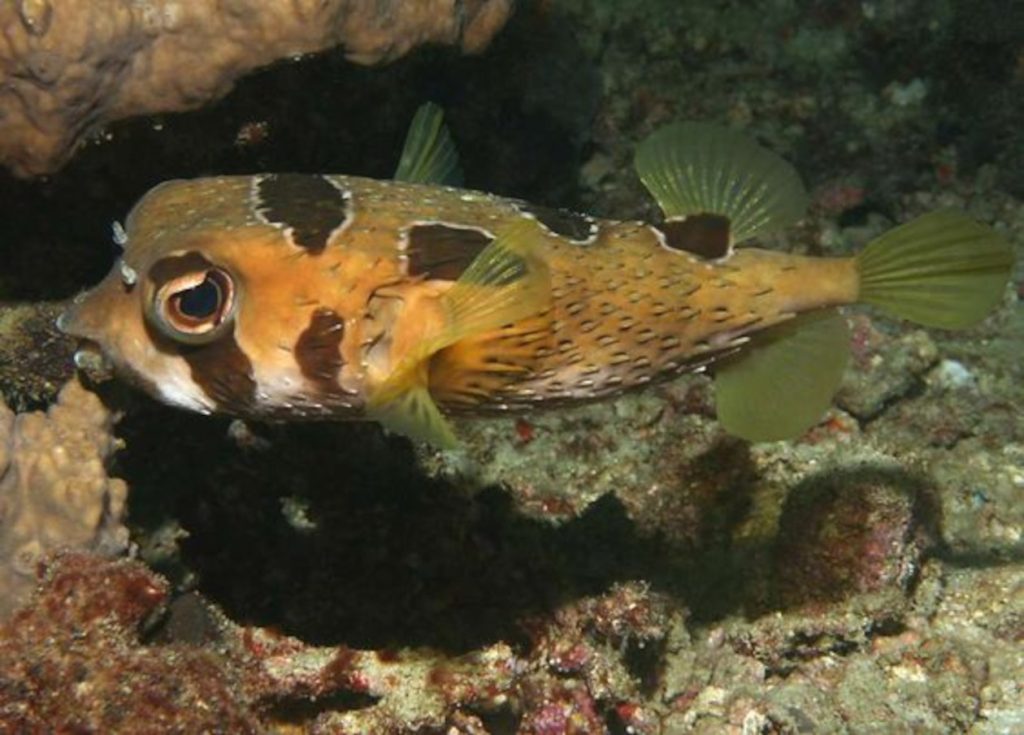
It may interested you: 12 most poisonous fish in the world
The freshwater type
It is a brackish water fish, which adapts to a community freshwater aquarium; despite being territorial and somewhat aggressive, it can coexist with other species.
You can have this fish in your aquarium for a long time, it has a life expectancy in an aquarium of about 10 years.
When threatened, it absorbs large amounts of water, thus intimidating its attackers.
The coloration of the back of the fish is bright yellowish green, crossed by many black spots in the form of moles.
The reverse is completely white, although under certain stressful emotional circumstances, it can change color and turn gray.
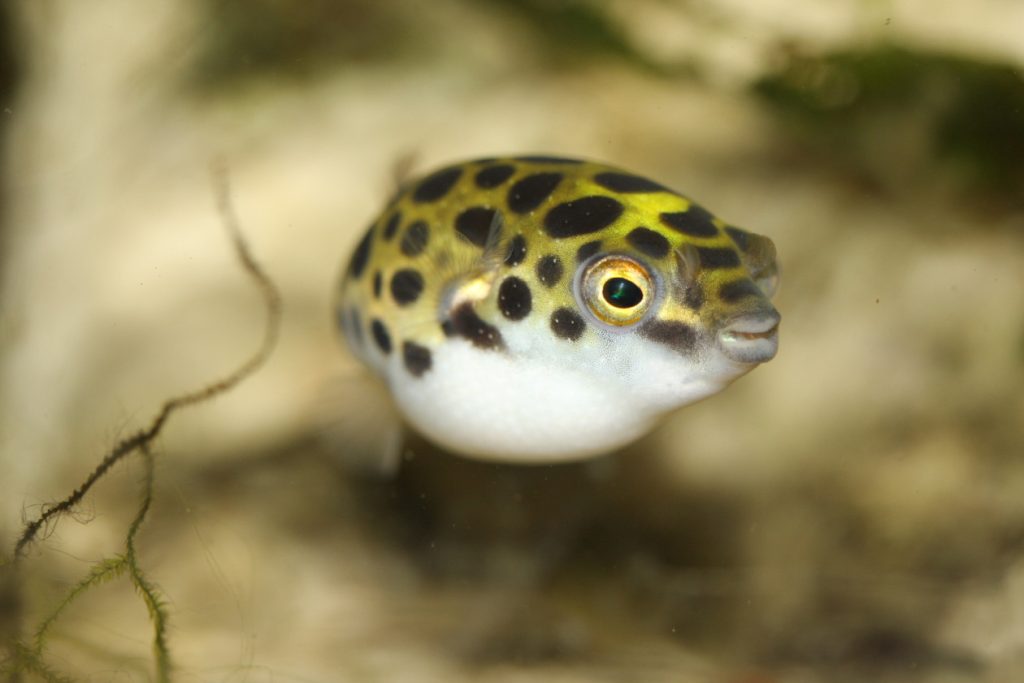
Behavior and compatibility
In the aquarium, you should not have more than one freshwater puffer fish, because they are quite aggressive with others of the same species.
They can only coexist with other species when the aquarium has good dimensions and there is enough space for everyone.
It is known that, like other Tetrodontids (yellow puffer fish, for example), they recognize their owner and allow themselves to be fed from his hand, while rejecting those they do not know.
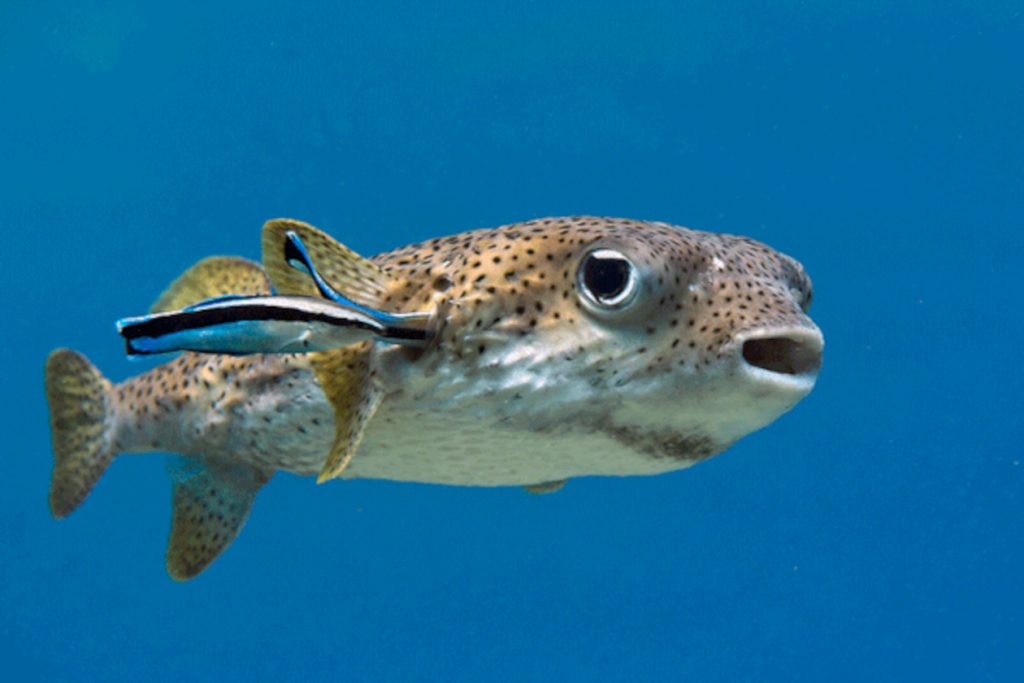
Did you know that the puffer fish inflates?
In fact, this defense strategy is pretty much complete. As part of its defense mechanism, this strange animal, in addition to using its poison when feeling trapped or threatened, reacts quickly by swallowing water, which increases its volume considerably until it becomes a ball.
In this state it can hardly enter the mouth of a predator. But, even if he swallows it before it inflates, he will pay with his life for the audacity of taking it to his mouth using his well-known deadly poison.
Also, when taken out of the water, the puffer fish inflates since it has the same capacity to swallow air as water.
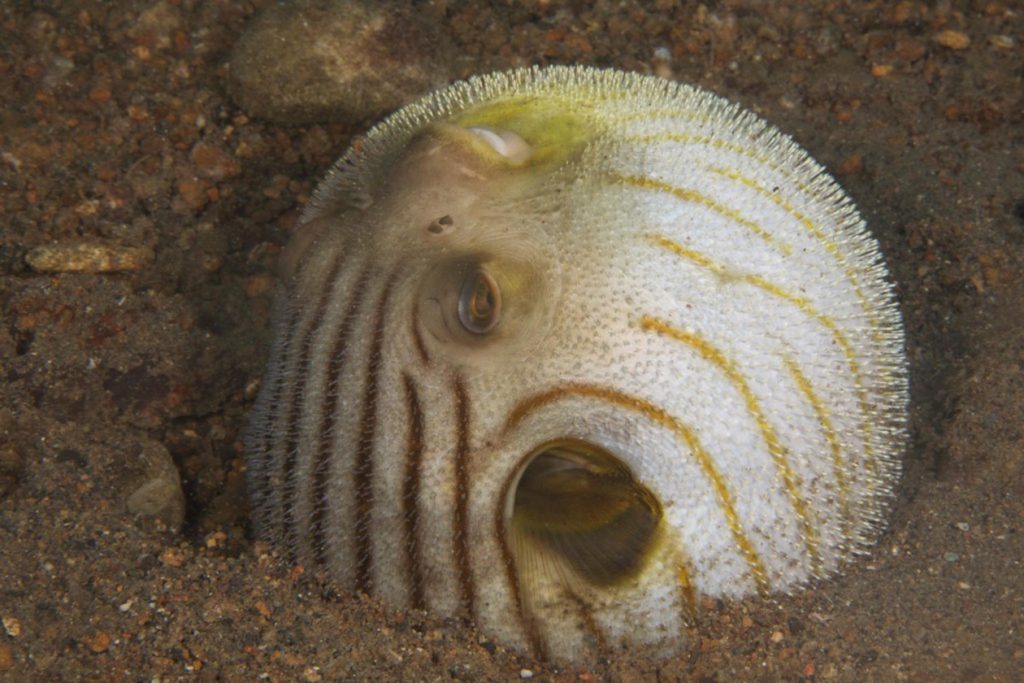
Characteristics of puffer fish
Its size can vary between 2.5 centimeters in the case of the dwarf puffer fish, while the largest can be up to 61 centimeters in size.
Its weight varies depending on the species in question, it can weigh from 150 grams to 10 kilos. They do not have scales and their skin is rough.
They sport a robust body with a large, broad head. Its eyes are large, circular and black, its lips are reinforced and it does not have dorsal fins.
It is a curious creature, agile and fast. Its color is very striking in that green is combined with black spots or yellow.
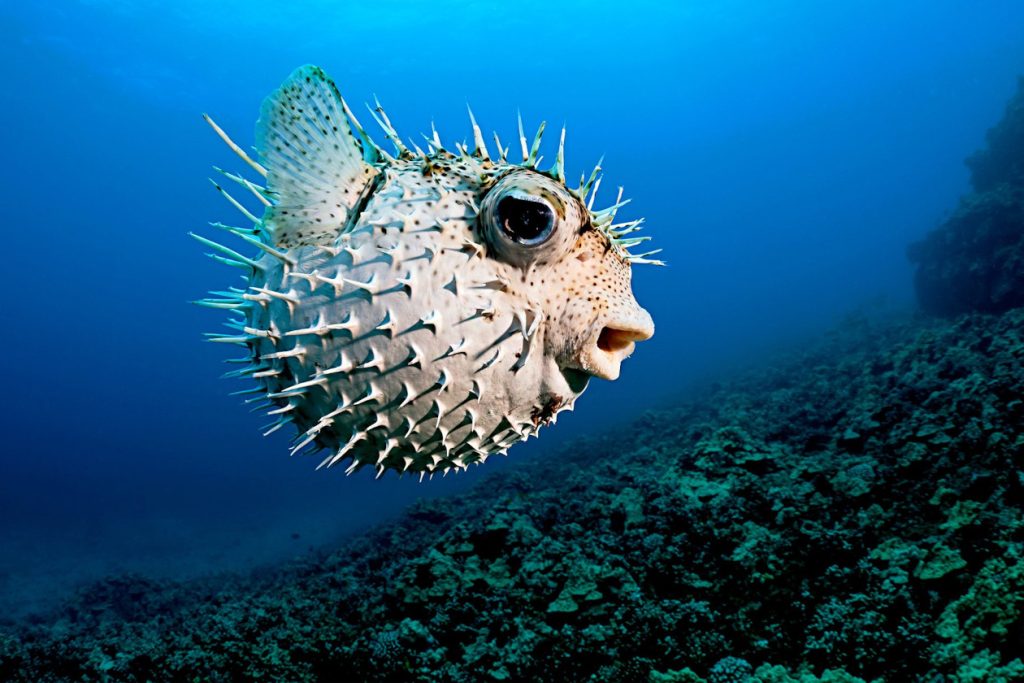
What is the diet of the puffer fish?
The puffer fish is omnivorous, so it feeds on snails, insects, larvae and worms, although without any problem it tends to bite everything that gets in its way.
Part of their nutrition are algae and invertebrates. The largest species has the ability to destroy shells thanks to its tooth or hard beak, so it can also consume mussels, clams, among others.
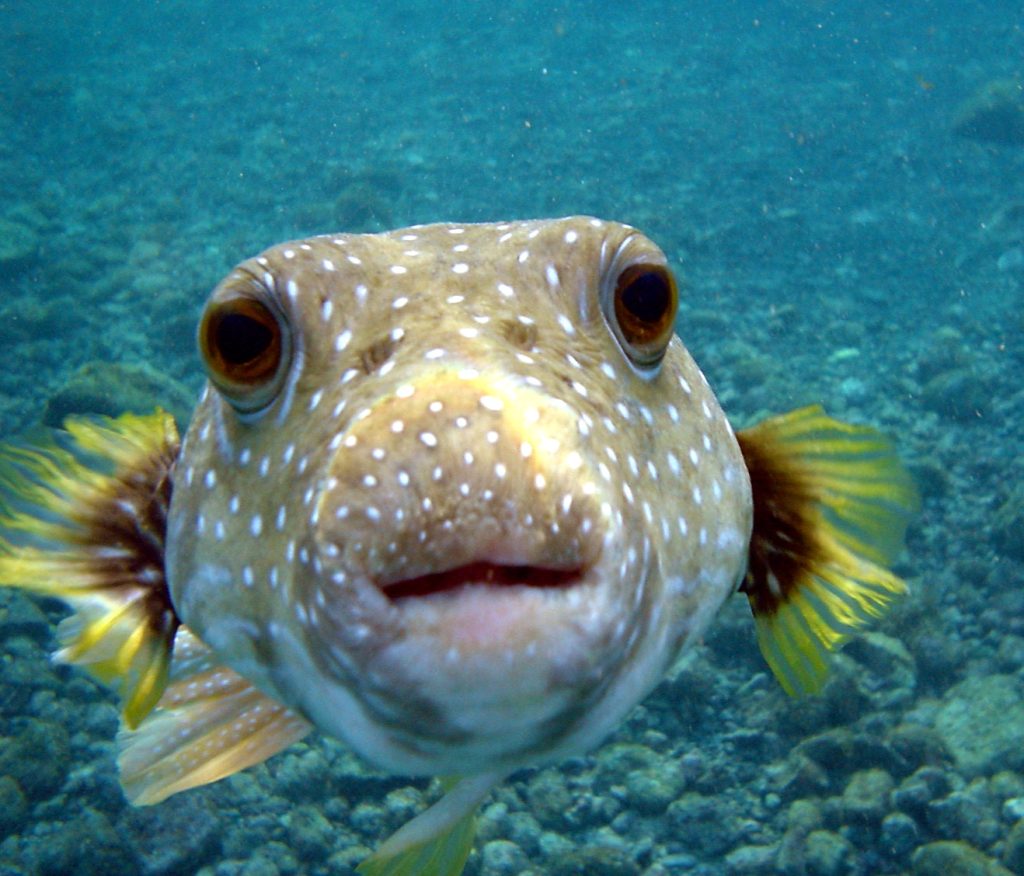
Where do pufferfish live?
Although all the existing puffer fish species in the world are around 120, they are concentrated almost exclusively in tropical waters or those that are temperate at about 23 to 26 degrees Celsius.
They are characterized in that they are solitary, so they coexist peacefully away from other fish, including those of the same species.
How do pufferfish reproduce?
When reproducing, the females deposit their eggs in the sea or wherever they are coexisting. During this time, she takes care of her eggs until they hatch, in about seven to nine days.
Once the babies are born, the mother leaves and the father takes care of them until they are independent.
It is quite difficult to differentiate the male from the female, but normally the male fish is usually smaller than the female.
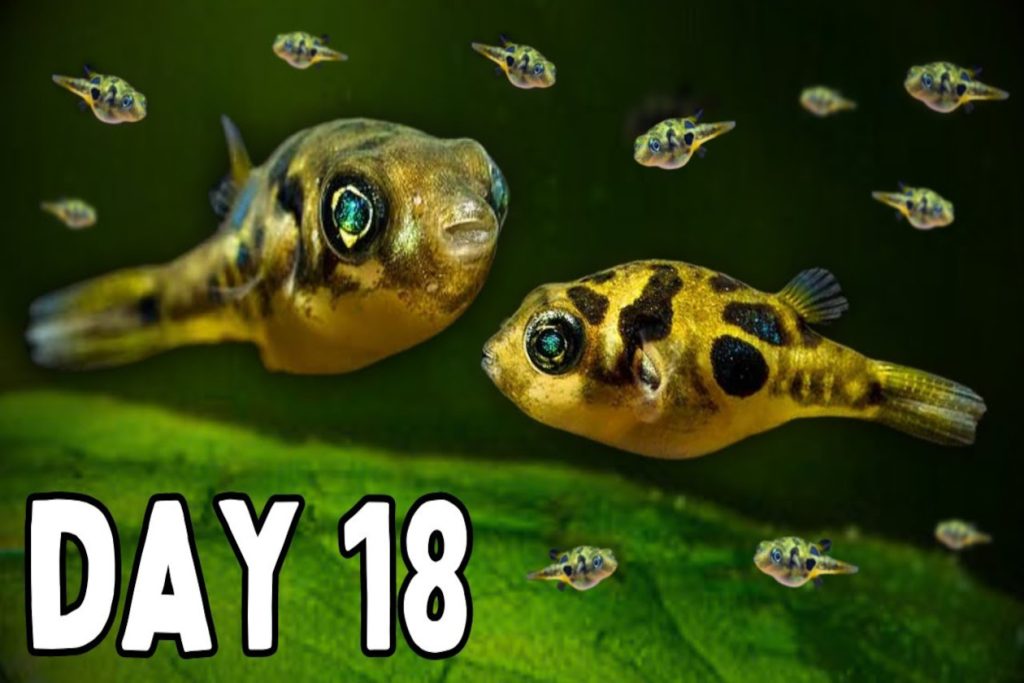
Types and varieties of pufferfish
There are varieties of pufferfish, some are:
The african
It is carnivorous, inhabiting the lower and middle parts of the Congo River. It is also known as the giant puffer fish.
Dwarf pufferfish
It bears this name because it is small, barely measuring about 3 centimeters and its nutrition is based on shrimp and other foods.
The black
Its face is comparable to that of a dog, it has a size of about 33 centimeters. It is very dangerous because of its tetrodotoxin which is very poisonous.
The one with blue spots
It is a medium-sized species, it can reach up to 80 centimeters. It has an oval shape, its background color is a grayish blue and you can find it in subtropical and tropical waters.
Pufferfish map
This fish can reach a measure of up to 65 centimeters. It has an oval shape, its background color is whitish and it is found in tropical waters. It usually is is diurnal and lonely.
The porcupine type
It feeds on molluscs and sea urchins. They are inhabitants of tropical areas and oceans.
It has a pale color with black spots, its spines are long and in its adulthood it can measure up to 50 centimeters.
The Japanese
This type of fish is very poisonous. They are very famous and the people who serve it in their restorants must take special care with its preparation.
Care and main diseases of puffer fish
For the care of this fish you must take into account that it is generally a solitary fish.
If it is in coexistence with other species in an aquarium, the space where it is located must be large enough and the temperature must be in a tropical environment between 22 and 26 degrees Celsius.
The diet should include dry foods, also worms or corals and you should be very careful with it, because it could have stomach problems.
It can suffer from common fish diseases, and it is important to know that it is much more vulnerable to parasites if they coexist in fresh water.
